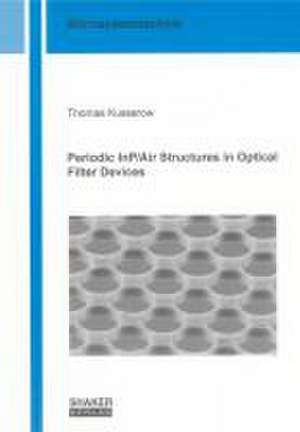Periodic InP/Air Structures in Optical Filter Devices
Autor Thomas Kusserowen Limba Engleză Paperback – 28 feb 2011
Preț: 287.66 lei
Nou
Puncte Express: 431
Preț estimativ în valută:
55.05€ • 59.78$ • 46.24£
55.05€ • 59.78$ • 46.24£
Carte indisponibilă temporar
Doresc să fiu notificat când acest titlu va fi disponibil:
Se trimite...
Preluare comenzi: 021 569.72.76
Specificații
ISBN-13: 9783832299002
ISBN-10: 3832299009
Pagini: 202
Ilustrații: 28 farbige Abbildungen
Dimensiuni: 146 x 208 x 17 mm
Greutate: 0.28 kg
Editura: Shaker Verlag
ISBN-10: 3832299009
Pagini: 202
Ilustrații: 28 farbige Abbildungen
Dimensiuni: 146 x 208 x 17 mm
Greutate: 0.28 kg
Editura: Shaker Verlag
